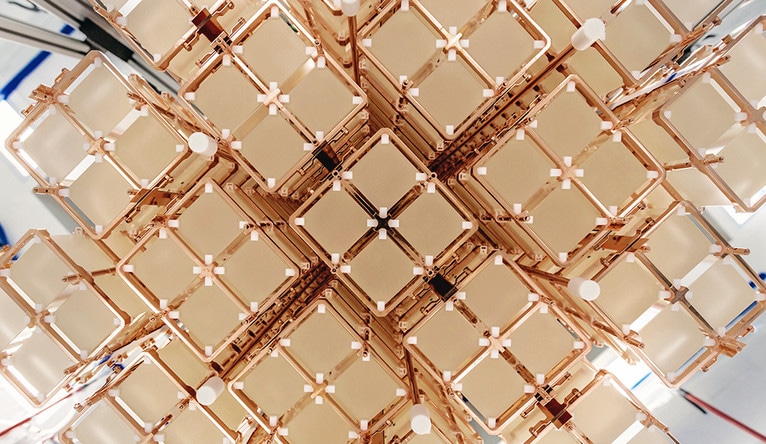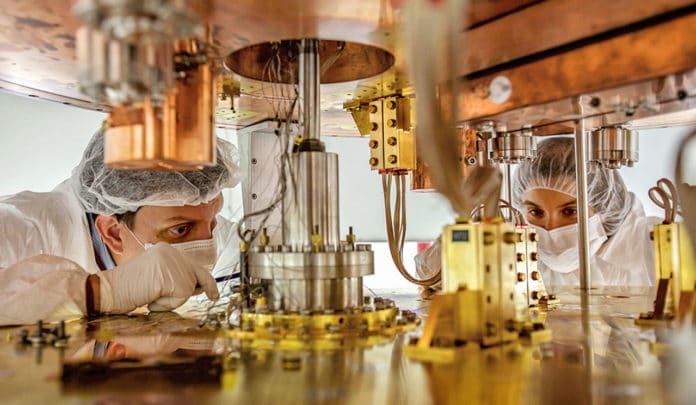Standard double-beta decay is a proven particle process. Two neutrons, which are uncharged particles in the nucleus of an atom, transform into two protons and emit two electrons and two antineutrinos. Antineutrinos are the antimatter counterpart to neutrinos.
The search for neutrinoless double-beta (0νββ) decay is one of the top priorities in nuclear and astroparticle physics. If observed, this process would unambiguously demonstrate that lepton number is not a conserved quantity and the Majorana nature of neutrinos.
Now, scientists from Yale University as a part of an international collaboration called the Cryogenic Underground Observatory for Rare Events (CUORE) are looking for proof of a rare particle process called neutrinoless double-beta decay. Discovering it, they state, would have significant ramifications for understanding neutrinos. The method may likewise help clarify why there is more matter in the universe than antimatter.
CUORE — an array of 988 3D cube-shaped crystals that are stacked in 19 copper-cladded towers and chilled to nearly absolute zero, the coldest possible temperature known to man — is intended to identify the signature of this hypothetical process.

Yale physics professor Reina Maruyama, a member of the CUORE team, said, “CUORE is an engineering feat. We cooled 988 detectors (containing a total of 740 kg of tellurium oxide and several tons of lead) down to 10 mK (millikelvin). We keep them cooled for years at a time. We are searching for (neutrinoless double-beta) decays with a half-life longer than 10 to the 26th power — that’s ten million-billion times the lifetime of the universe.”
Scientists experimented deep beneath a mountain in central Italy for proof of how matter was created in the universe. They conducted an experiment under a mountain to shield it from cosmic rays and other disruptive environmental backgrounds.
However, the new result did not show evidence of neutrinoless double-beta decay, it yielded a better idea of a neutrino’s mass during such a process.
Karsten Heeger, professor and chair of physics at Yale, director of the Wright Lab, said, “To reach this level of precision, CUORE is located miles underground and uses special materials such as ancient lead to shield the sensitive detectors. For now, the laws of physics as we know them are still safe, but we still don’t have clues for how we ended up with more matter than antimatter in the universe.”
Scientists are working on a follow-up experiment called CUORE Upgrade with Particle Identification (CUPID) that would extend the sensitivity of CUORE’s measurements by 10-fold.
